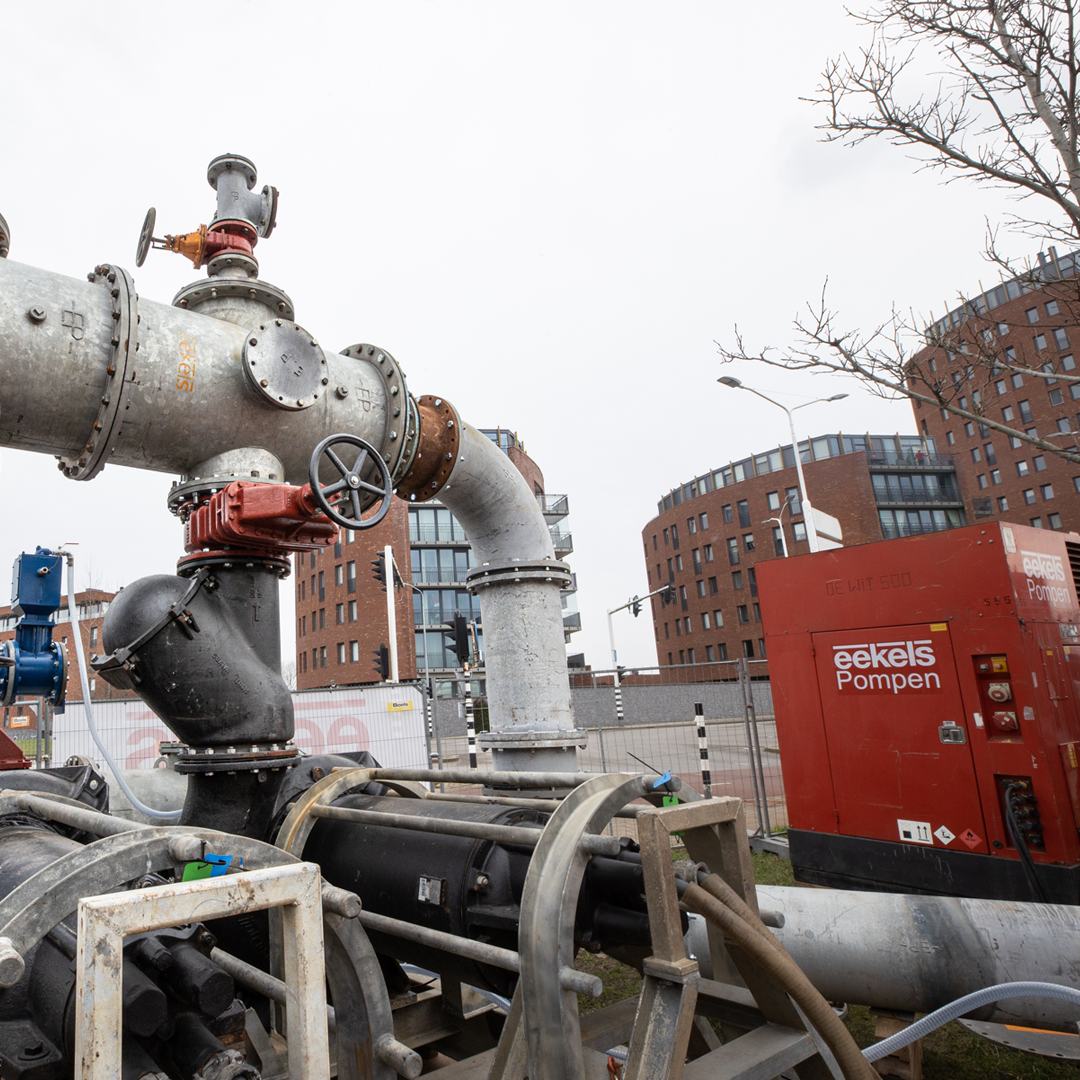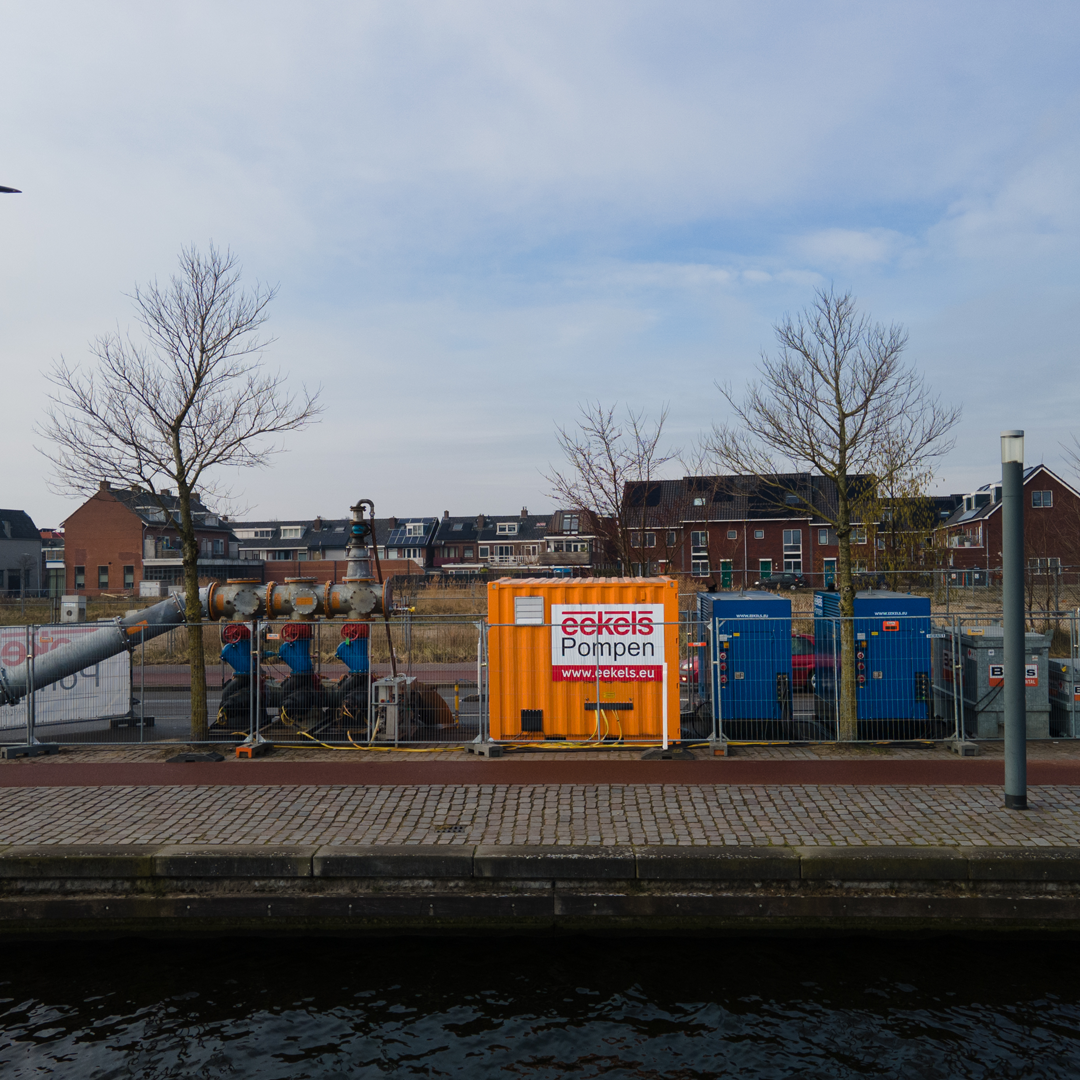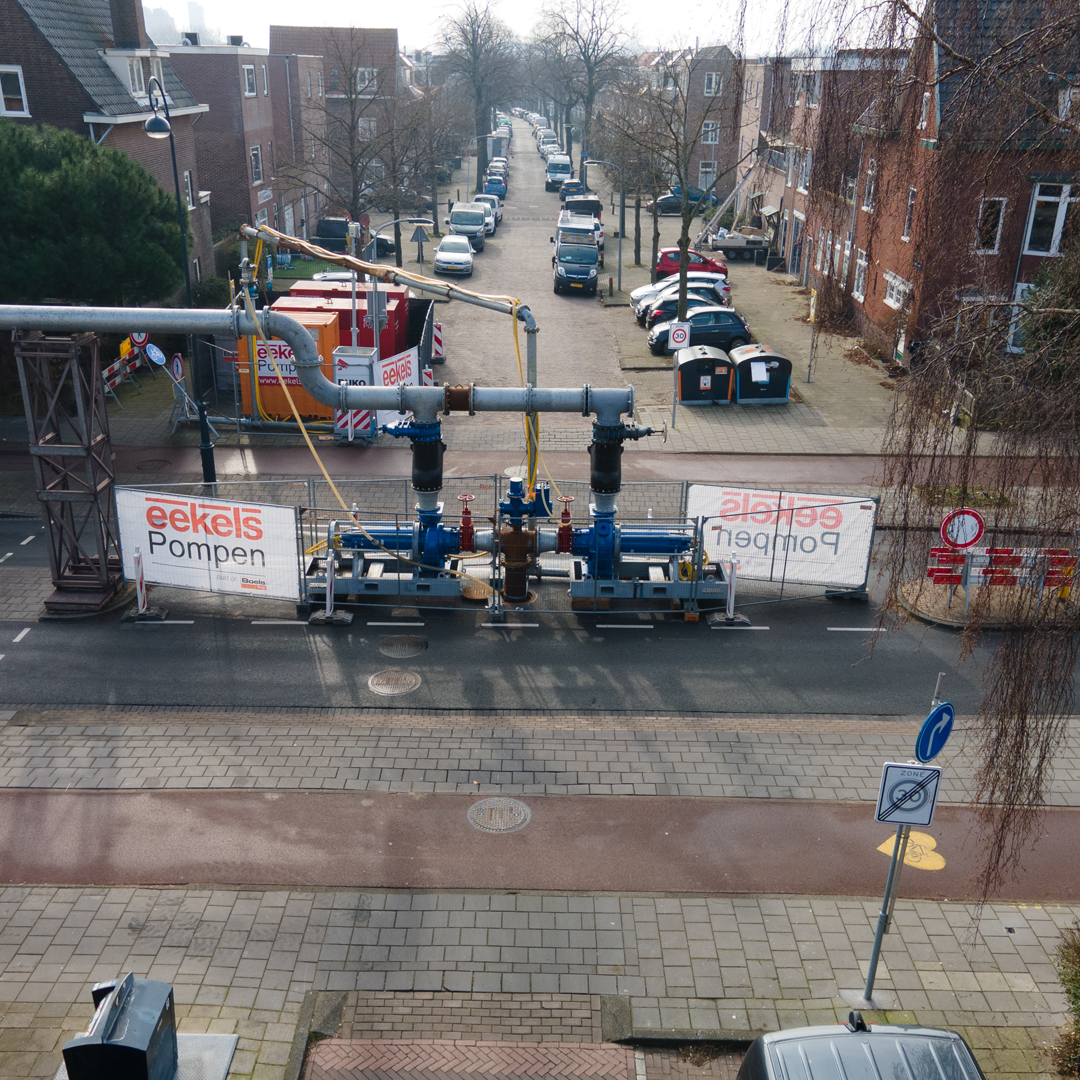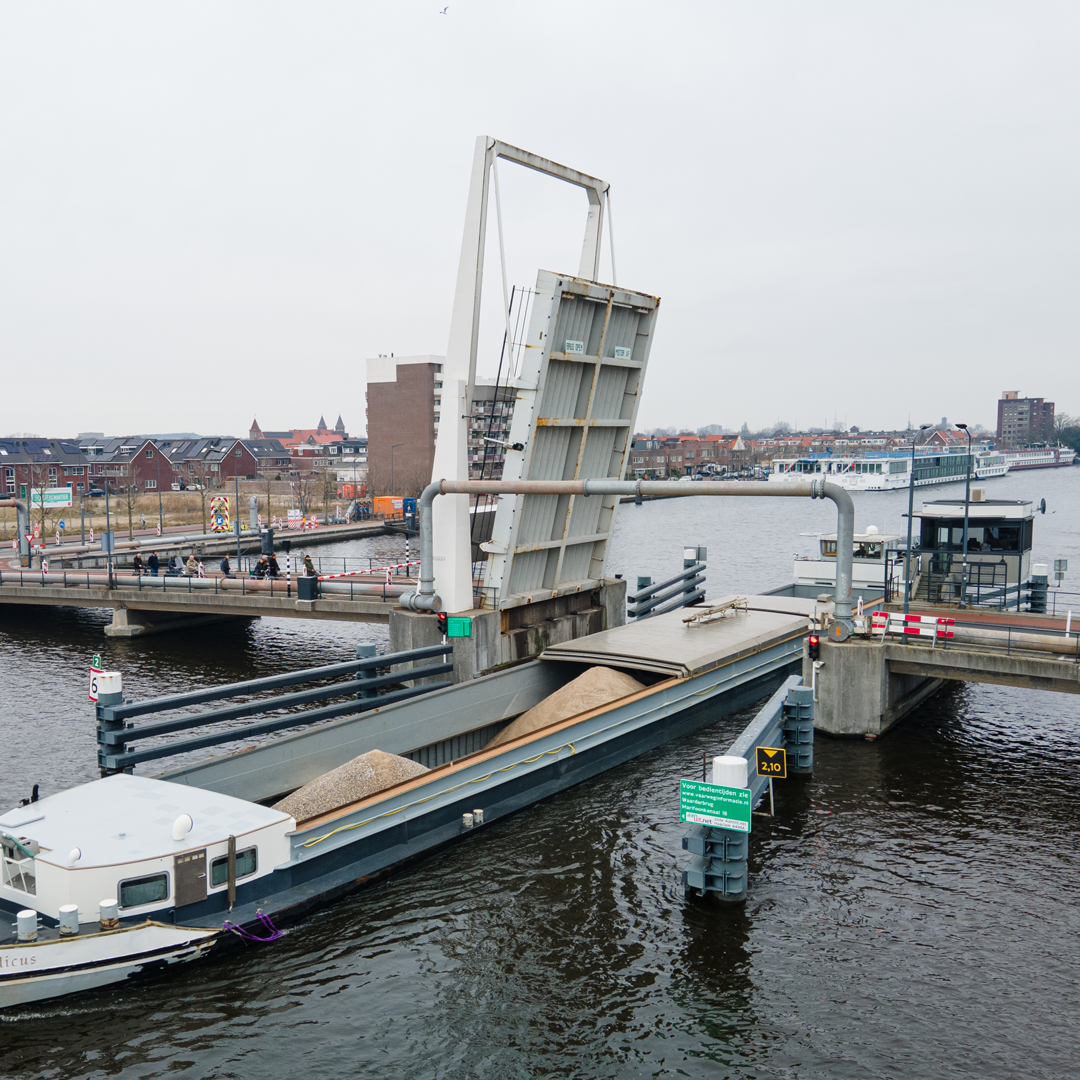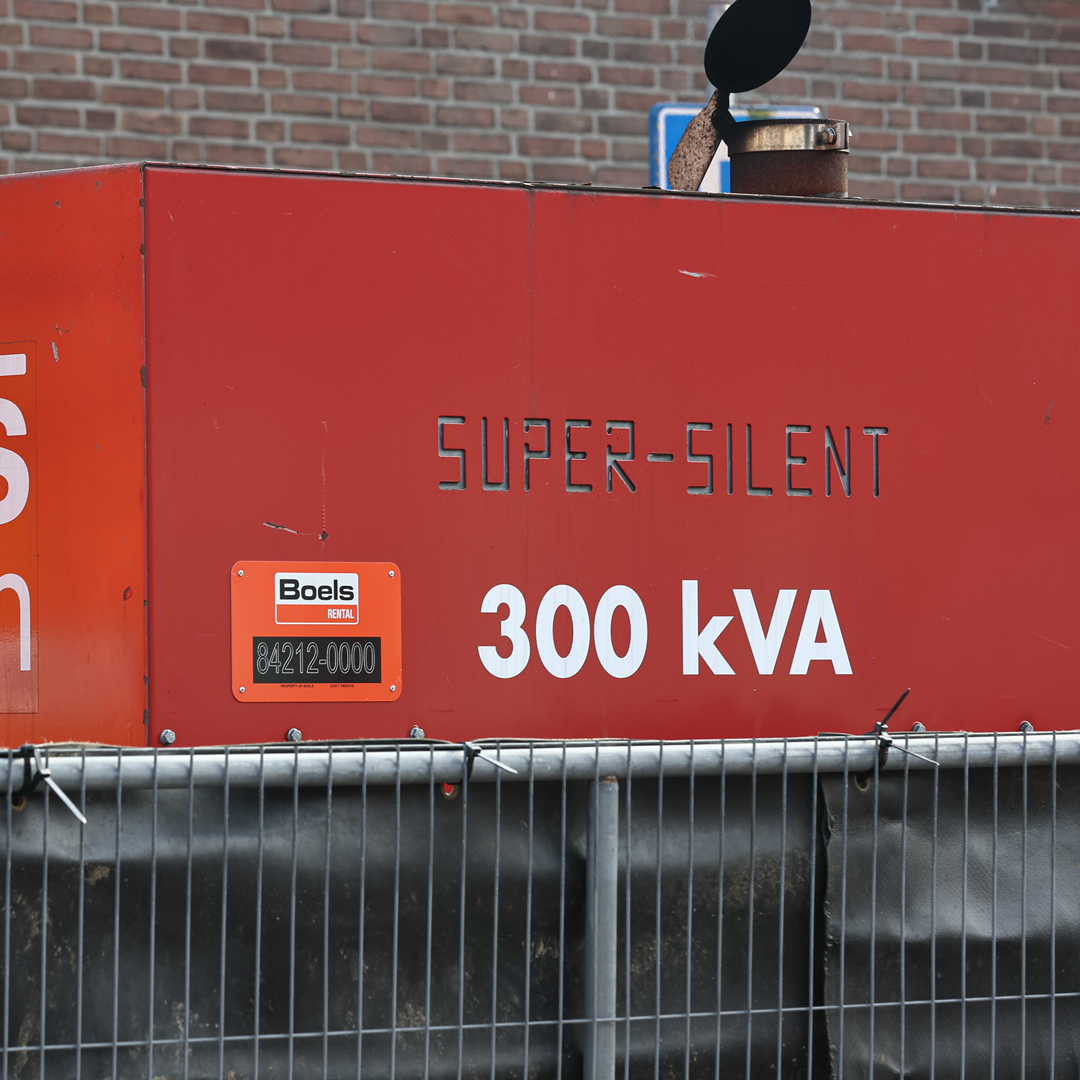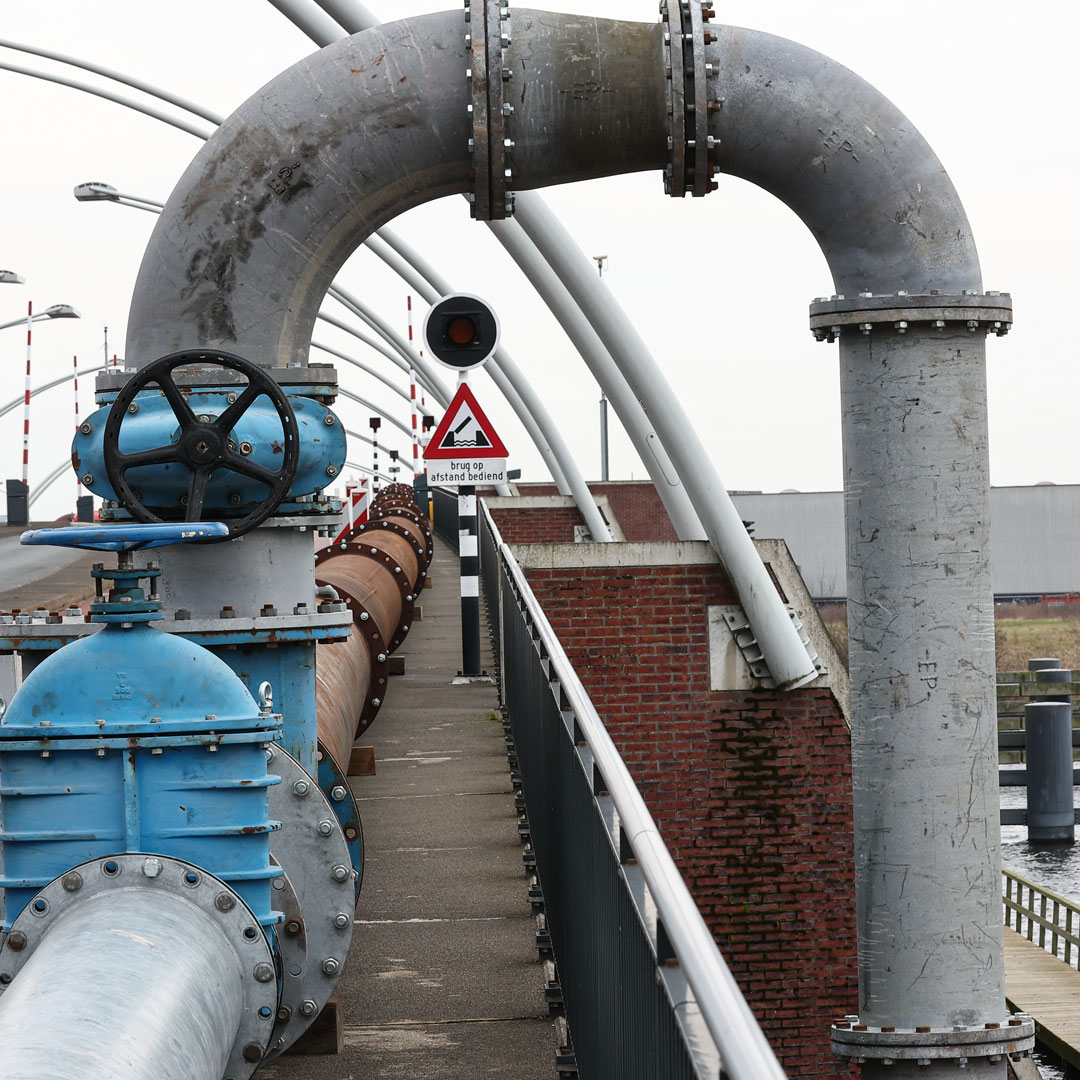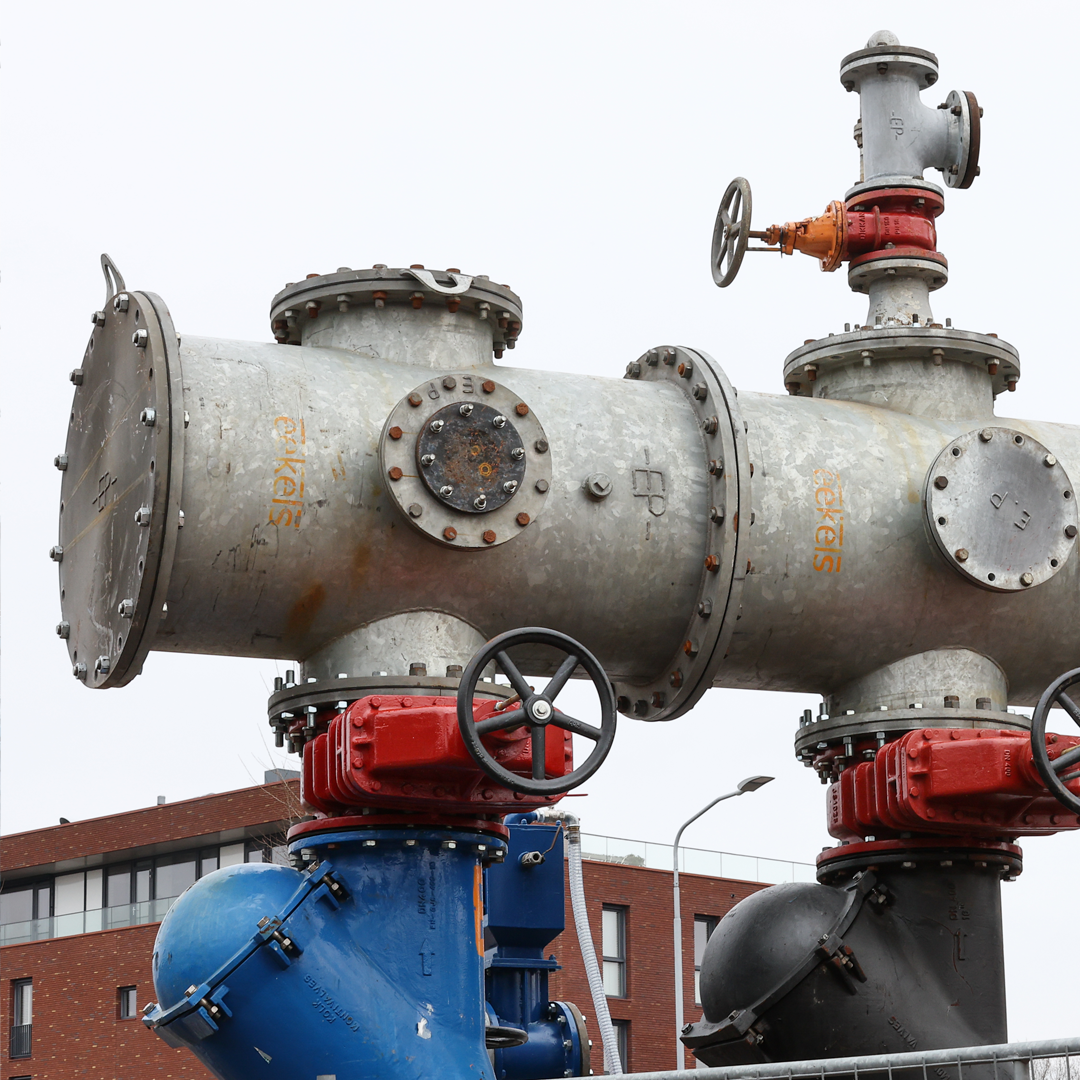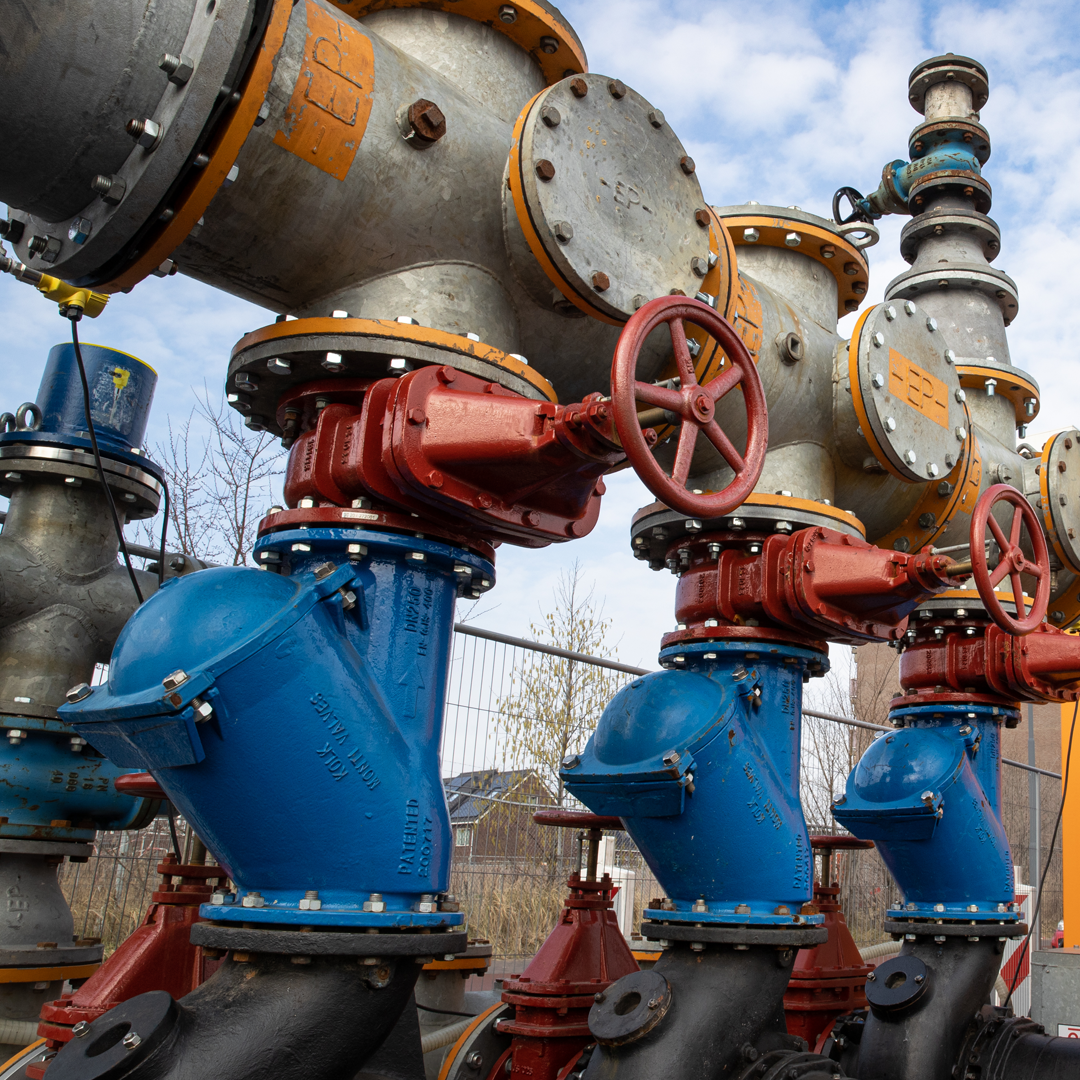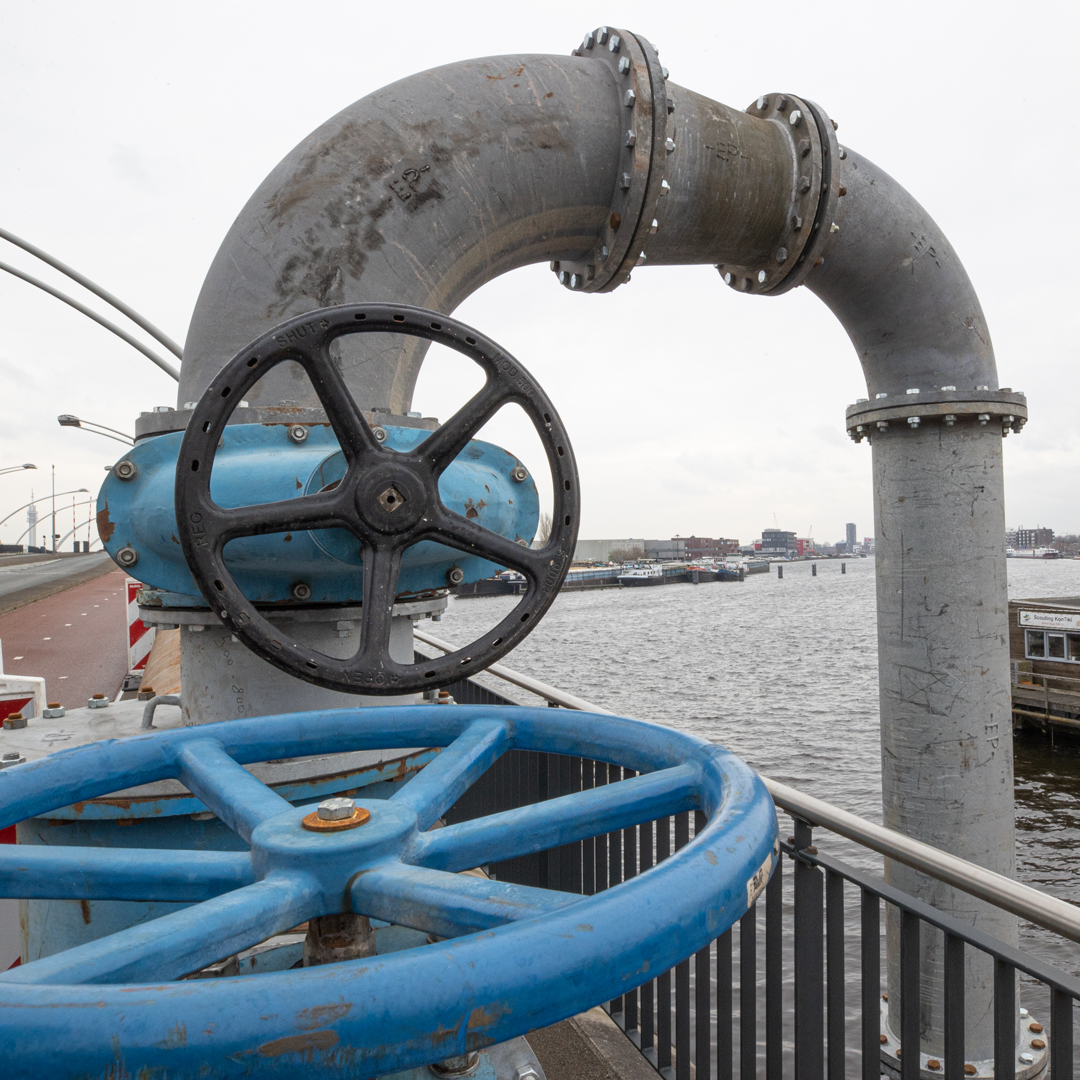Reading time: 5 minutes
When you approach the River Spaarne in Haarlem over the Waarderbrug, you immediately notice the many large pipes and temporary pumping installations from the company Eekels. Part of the sewerage system is being renovated over a distance of one kilometre by the sewerage specialists at Aarsleff. This means that more than 4,500 m3 per hour of sewage water has to be diverted through pipes and pumps. Exactly the kind of speciality work that Eekels excels at. Time to bring this extraordinary specialism at Boels into the spotlight.
Smooth sailing
The Waarderbrug, a movable bridge, was open when we went to take a look at the temporary pump installation at Spaarndamseweg together with Eekels Project Leader Guido van den Elsen and Aarsleff Technical Director Jeroen Lute. The Mordicus barge passed through the bridge carrying its cargo of sand. Since part of the sewerage system to be renovated runs under the river, Eekels had to accomplish a small feat with its elevated pipe construction parallel to the bridge. This allows cargo ships to pass through unobstructed.
Shhh… there’s work going on here
Between the pavement and the road proudly stands one of a total of three powerful temporary pump installations with two super silent 300 kvA generators. This equipment ensures that the sewage water is diverted through the pipes towards the water treatment plant on the other side of the city. Pipeline renovation company Aarsleff is renovating a kilometre of deep sewerage on behalf of the municipality of Haarlem. A year of preparations preceded this complex job, which will take two months to complete. A remarkably ingenious solution was found to carry out the work, with the inside of the sewerage pipes being covered partly with needle punched felt and partly with a fibreglass ‘stocking’. These custom-made stockings are impregnated with polyester resin. The stockings are then cured at the project site using heat or light. After this treatment, the sewers will last another 50 years. Thanks to this ‘relining’ work, there is no need to open up the road, making for a more efficient, less inconvenient and, most importantly, cheaper approach, Jeroen explains.
We keep you going
Aarsleff and Eekels are certainly no strangers. They have worked together in the past, but on a smaller scale. The project in Haarlem is slightly bigger in terms of rental equipment and scope. “Yes, especially the amount of water, the length, and the bridges make this a nice challenging job. A project that only comes around every once in a while,” says Guido. “The contract came in a few months ago. I already knew Aarsleff from my previous job. I went to visit the site with Jeroen a while back and carefully listened to his needs.
“The assignment was clear. Aarsleff had to divert 4,500 m3 of water per hour, over a distance of 1 kilometre with the added challenge of two bridges that we had to cross.”
We took that information back to Eekels, worked on the engineering and established a plan of action. Guido repeatedly referred to the construction at the Waarderbrug in particular as a wonderful piece of work that had been achieved together with the engineers in the office. The Aarsleff Project Manager agreed. “Eekels had quite a feat to manage in order to meet our demands. Thankfully, we understand exactly what we can expect from the Eekels team. For us, reliability and expertise are the most important aspects. They keep their promises. That gave us the confidence that we would be able to get this job done properly for the municipality of Haarlem. A kind of peace of mind, as it were, and that’s nice.”
One and a half kilometres of steel and plastic pipes
A total of three pump installations are required for this job. Each installation consists of several pumps and generators. Between the pumps lie one and a half kilometres of steel and plastic pipes in different diameters ranging from 400 mm to 800 mm.
Reliability and reducing the inconvenience level were issues that played an important role in the project. “The municipality of Haarlem expressed the need to keep any inconvenience to residents to a minimum. That meant that we needed to place our installations, in consultation with Aarsleff, in a way that allowed traffic to flow properly. It meant we would be working with super silent generators and electric pumps and placing the pipes at the important traffic bridges at night.”
Guido and his team are especially pleased with the way the pumps and bridges were placed. “Yes, you can have all the high expectations you want but you also have to make it happen, and on top of that – make it happen for 10 weeks. So we are very proud of the way our equipment has been successfully installed in Haarlem.”
The Aarsleff job is on schedule according to Jeroen. “After renovating the pipes, the manholes will follow. We hope to have everything ready by mid-March so that the temporary pumps and all the pipework can disappear from the streetscape, and we can successfully conclude this project on behalf of the municipality of Haarlem.”

